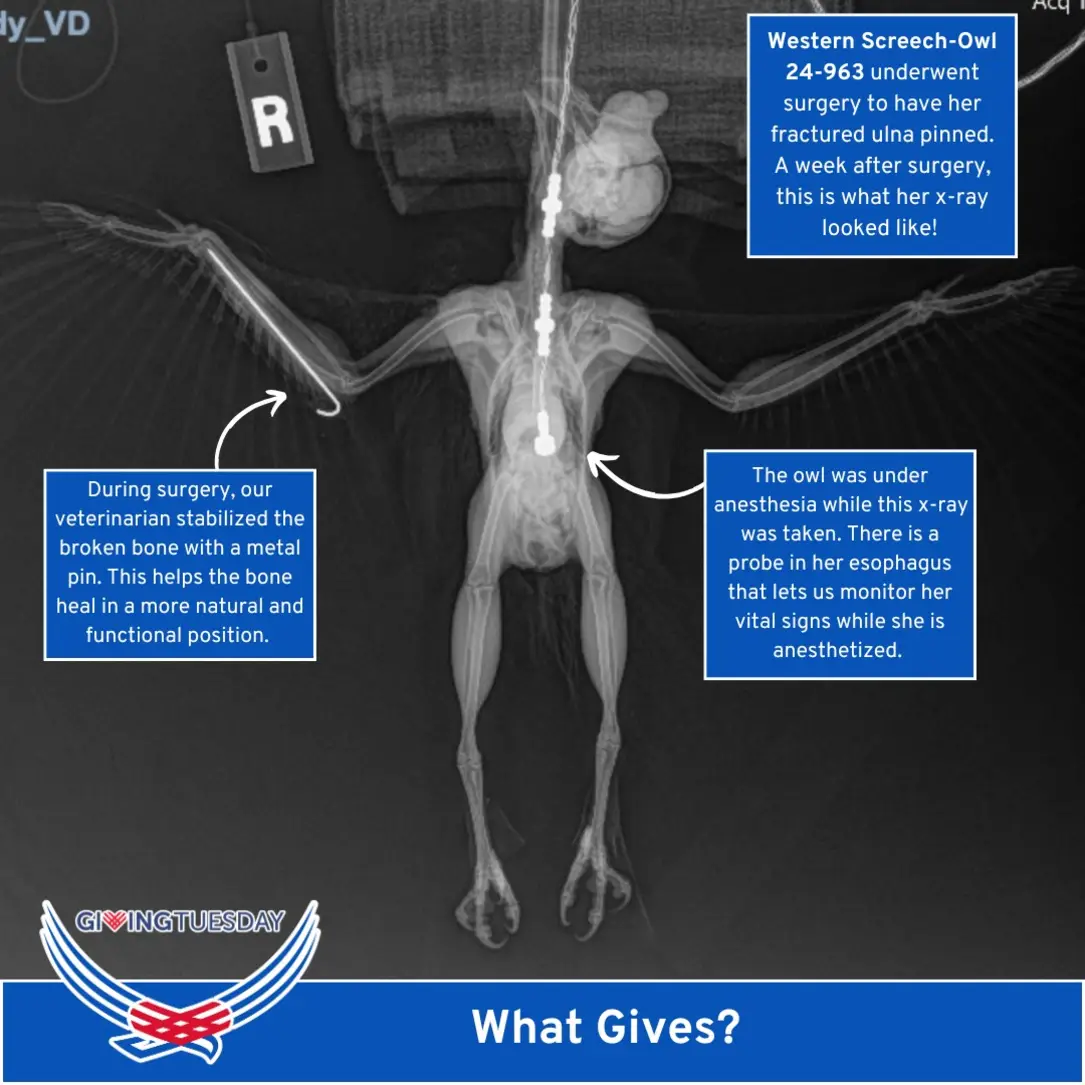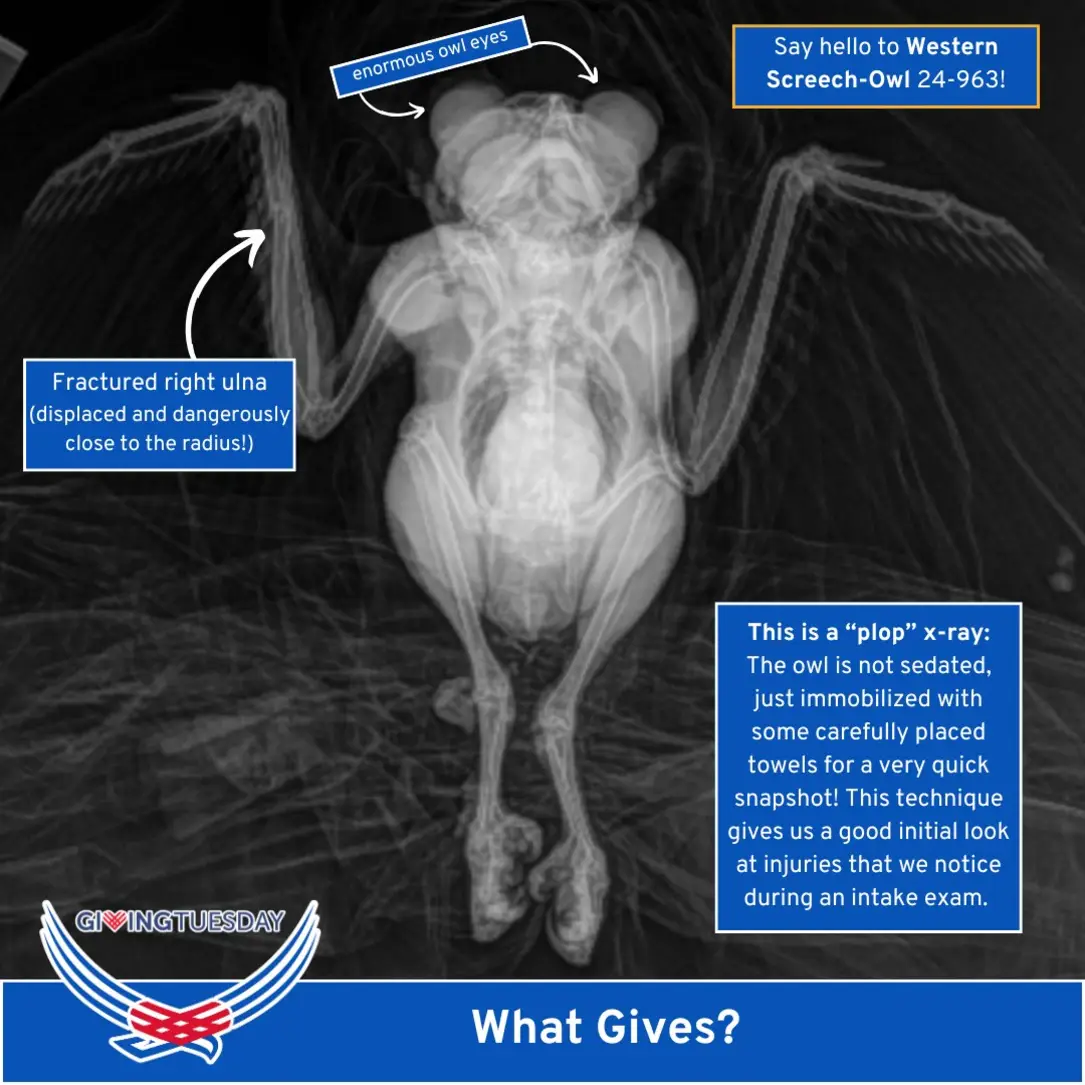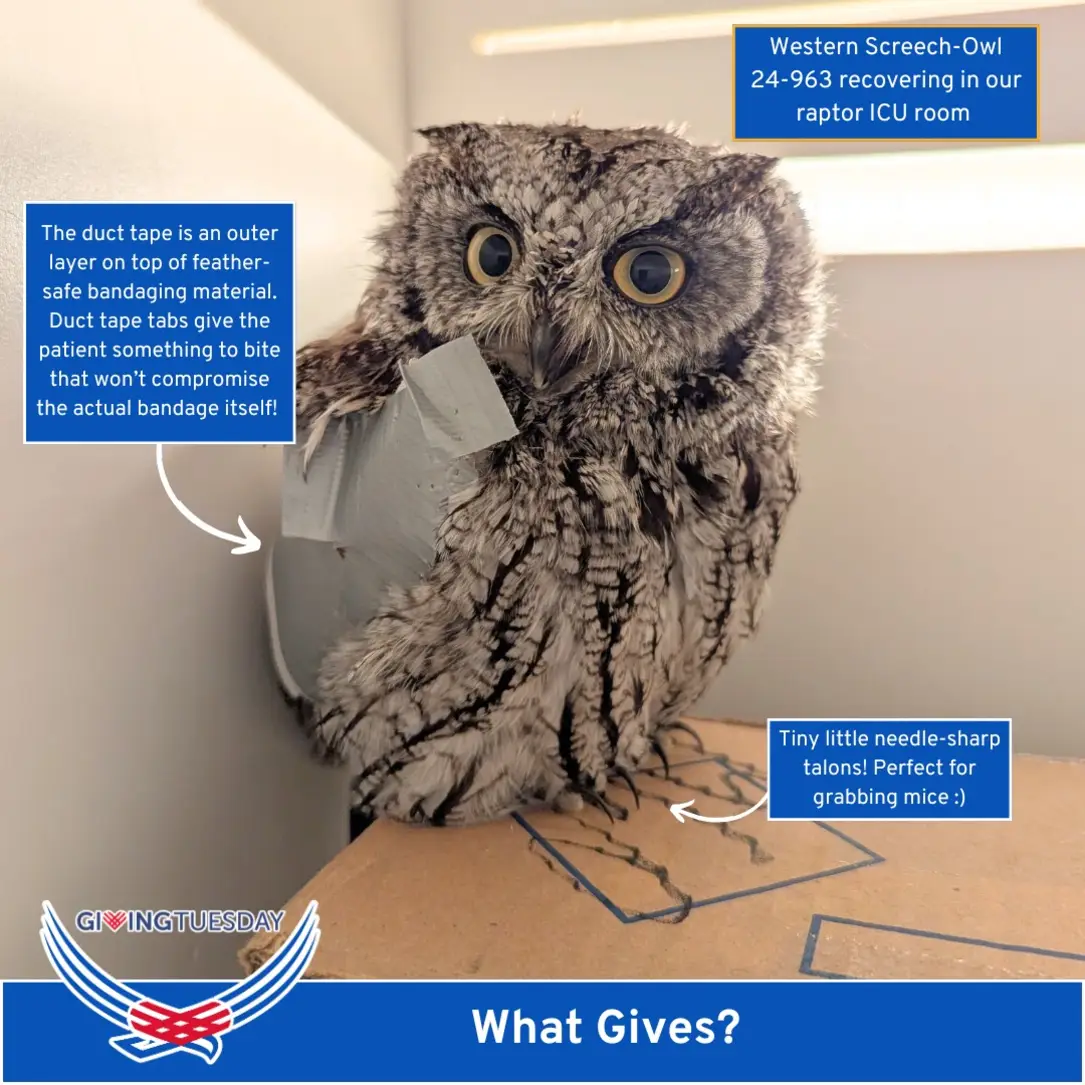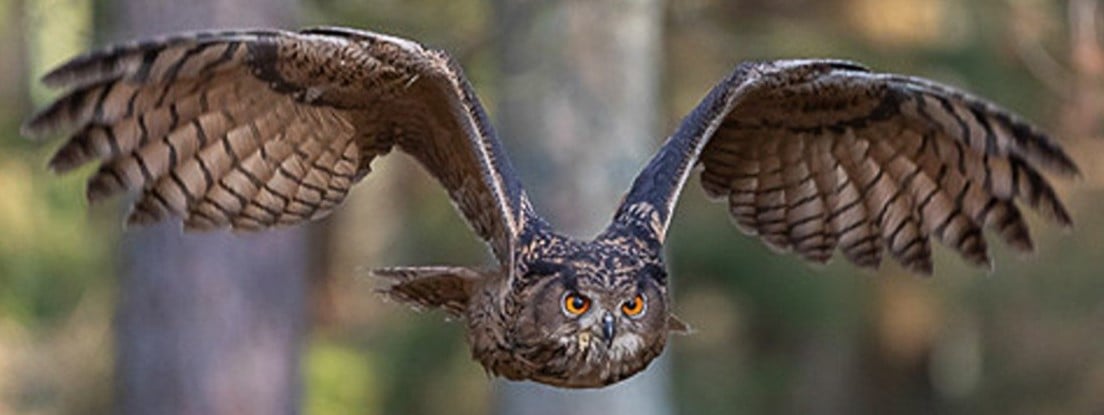From NM Wildlife Center
Whooooo was in that x-ray we posted this morning? That would be one of our current hospital patients, Western Screech-Owl 24-963. This owl arrived with a fractured ulna, which we were able to feel during the owl's intake exam. At the end of the exam, we took a "plop" x-ray - a quick snapshot taken while the patient is conscious but immobilized under carefully placed towels - to check on the placement of the fracture.
What we saw in the x-ray was a mid-shaft fracture, which generally has a better prognosis than one close to a joint. However, the broken ends of the ulna were resting against the nearby radius. If the fracture were allowed to heal in that position, the two bones would likely fuse together (synostosis) and the owl would never be able to use that wing correctly.
As soon as 24-963 was stable enough for general anesthesia, she was able to undergo surgery right here at NMWC to have her fracture pinned. We are very fortunate to have a full-time staff veterinarian as well as a team of highly skilled wildlife rehabilitators to assist during surgery! The pin in the owl's ulna - which you can see in the third picture here- will remain there until the bone has healed enough to be stable on its own.
In the meantime, every few days, our hospital team checks and cleans the surgical site and performs physical therapy on 24-963's wing to make sure she is maintaining full range of motion. All of that is done with the owl under sedation, since those procedures would otherwise be very stressful and painful for her. She receives daily medications to control her pain and prevent infection, and she's eating mice on her own like a champ!
X-ray Images
During surgery

The plop



Poor little hoot hoot, they look so confused... Glad they are recuperating though!
I'm sure it feels better now with the wing reset, and it will get some nice rest and free food for a bit.
Soon it will be back where it belongs though, good as new and at peak health!